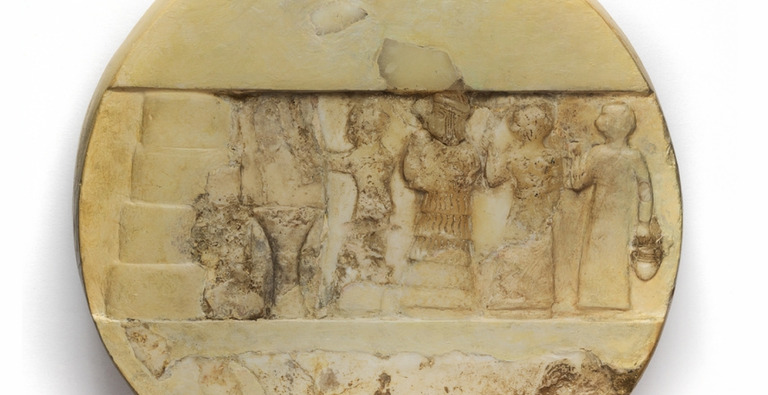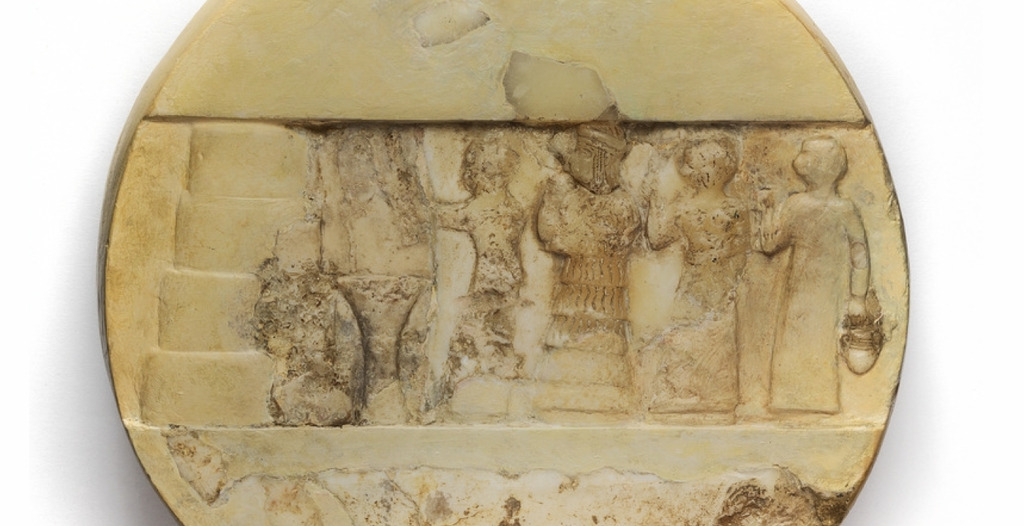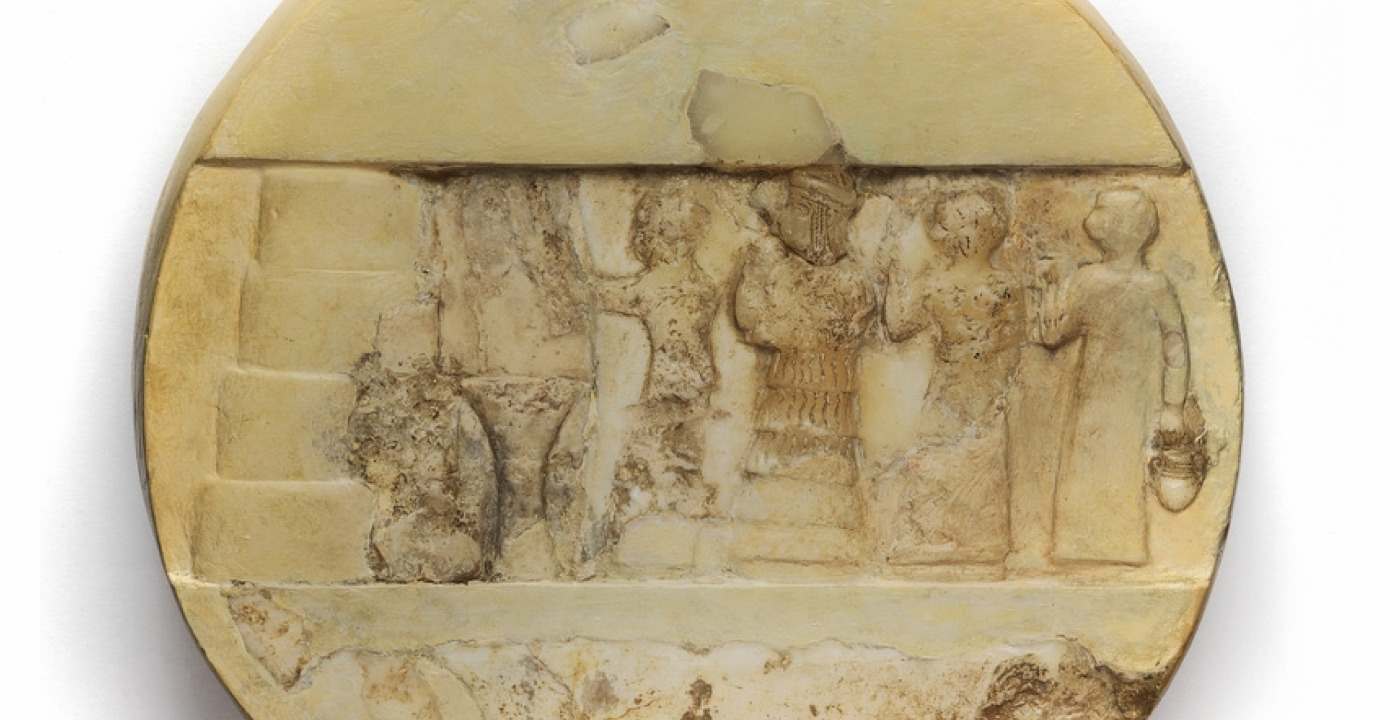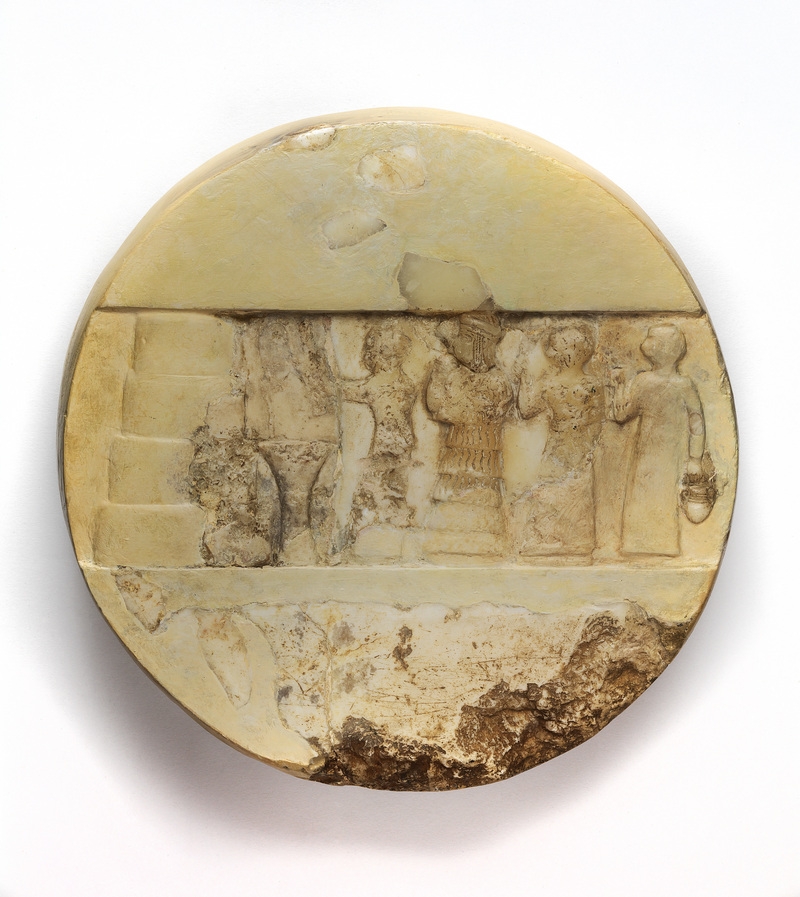Birth
2285 BCE Akkad, Mesopotamia
Death
2250 BCE, Ur, Mesopotamia
Enheduanna was the first author known by name in history. She received this name, which means “high priestess, ornament of heaven” in Sumerian, upon her appointment to the temple of the moon god in Ur, a city in southern Mesopotamia, in present-day Iraq. As the daughter of the Akkadian king Sargon (ca. 2334–2279 BC), Enheduanna not only exercised considerable religious, political, and economic influence but also left an indelible mark on world literature by composing extraordinary works in Sumerian. Her poetry reflected her deep devotion to the goddess of sexual love and warfare—Inanna in Sumerian, Ishtar in Akkadian.
Personal Information
Family
Mother: Tashlultum
Father: Sargon of Akkad.
Siblings:
Rimush, Manishtushu, Ibarum and Abaish-takal. Little is known of Tashlultum and Sargon’s ancestry, although some cite Sargon’s father as La’ibum.
Marriage and Family Life:
Installed by her father, Sargon of Akkad, as the En-Priestess of the lunar deity, Nanna. She lived as the priestess in the temple complex at Ur, called the giparu. En priestesses are thought to have been celibate, so she has no known descendants or spouse.
Education
Royal women and priestesses in early Mesopotamia appear to have had a significant role in writing and composition, a connection evident in the poetry of Enheduanna. Later En priestesses such as Ennigaldi-Nanna, ran scribal schools for elite women, and it is likely Enheduanna would have also been involved in education and the scribal arts.
As a high priestess, Enheduanna would likely also have had extensive training in matters of cult. Her poetry describes her attempts to calm the vengeful goddess of love with prayer, song, and ritual.
Religion
Enheduanna held a powerful religious role during a time of great upheaval. During the time of the unification of southern and northern Mesopotamia, Enheduanna used her position to promote unity and religious harmony.
While her primary role was as the priestess of the moon god, Nanna, Enheduanna was devoted to the worship of Inanna/Ishtar, the goddess of love representing the morning and evening star.
Enheduanna’s role involved making dedications, singing praises to the gods, pouring libations, and composing religious works. She lived in the temple alongside other religious professionals.
A remarkably clear and coherent image of Inanna appears in the works of Enheduanna, despite a passage of time spanning over four thousand years. The goddess of love is praised in the poet’s compositions for her beauty, her ferocity and her powerful voice, as well as for the close bonds she shares with her fellow deities, and her ability to wield the divine powers of the ME (cosmic powers related to the harmonious functioning of the universe).
Enheduanna’s worship of Inanna involves both a professional and personal element. In the Exaltation of Inanna (also known as Inana B) Enheduanna credits the goddess for answering her prayers and defeating her enemies; this composition emphasises the goddess’ ferocity and rage, and the unlimited scope of her influence. The poet also speaks of her sense of inferiority in attempting to clearly encapsulate the many cosmic powers of the deity in writing—a feeling which may find empathy among modern writers on the subject! The poet’s description of her sense of awe at the greatness of her divine subject could perhaps be viewed as the first known example of the historiographical tradition of the ‘apologia,’ from a named author.
Transformation(s)
The third millennium BCE was a time of upheaval in Mesopotamia. The conquest of Sargon the Great saw the development of the world’s first great empire. The city of Akkad become one of the largest in the world, and northern and southern Mesopotamia were united for the first time in history. In this setting, Enheduanna played an influential role in preserving the cultural, religious, and literary traditions of southern Mesopotamia.
Enheduanna’s powerful praise of the goddess Inanna/Ishtar also helped to define the image of the deity and cement her image in the Mesopotamian pantheon. Enheduanna’s poems to Inanna harmonise the seemingly conflicting aspects of the goddess’ image: love and vengeance, war and healing.
less
Significance
Works/Agency
Numerous written compositions, including 42 temple hymns, the Exaltation of Inana, the myth of Inana and Ebih, and hymns to the lunar deity Nanna.
Enheduanna commissioned the alabaster relief, the Disk of Enheduanna, which is inscribed with her dedication.
The Disk shows the priestess in the company of three male attendants, pouring a libation at an altar. The figure of the priestess on the disk is drawn with precision, and her countenance has been preserved. While the inscription on the reverse of the disk is fragmentary, it gives Enheduanna’s name, and appears to describe the action of the image, where the poet is performing a religious dedication for the deity, Inanna of Ur.
Reputation
As a princess and priestess, Enheduanna had a high social status during her life. Although autobiographical elements of her poetry indicate controversy and conflict at her temple, and a period of exile, the Exaltation of Inanna, Enheduanna credits the goddess of love with securing her victory over her enemies.
Enheduanna was a powerful and influential figure in her own time. Her abilities and literary achievements were recognised in ancient Mesopotamia long after the time of her writing, with her compositions formed part of the curriculum in scribal schools.
New and unfolding information and interpretations. Meaning or significance, both for our understanding of her and as modifications for existing representations.
Literacy in Mesopotamia was once considered to be the preserve of a small, elite group of male scribes, however, recent scholarship has shown that many women as well as men from different societal backgrounds could read and write in Mesopotamia—although ‘literacy’ involved a variety of levels of engagement with writing.
Enheduana’s works were among a canon of great literary works studied as a cornerstone of Old Babylonian education. Her work, the Exaltation of Inanna, is included among a group of works known as the Decad. These ten compositions (making up the Decad) formed an important part of student’s learning, and the Exaltation of Inanna is one of the best attested works of Sumerian literature.
For a female author to stand at the beginning of written traditions in world history is perhaps at odds with the early western canonical tradition, where male authors tended to dominate. Scribal traditions in the ancient world are frequently considered an area of male authority, yet the connection between women, writing and wisdom in Mesopotamia has very early origins. The Sumerian grain goddess Nisaba is the earliest deity to be connected with the protection of the art of writing, and the goddess consequently became known as the transmitter of wisdom. The close connection of writing and wisdom may have developed through the cultural acceptance of writing as a precise manual craft, one which was honoured at the time as an intellectual skill. Royal women and priestesses in early Mesopotamia appear to have had a significant role in writing and composition, a connection evident in the poetry of Enheduanna.
Legacy and Influence
As the world’s first individually identified author, Enheduanna left a lasting legacy on the written cultures of the ancient Near East. Yet, in a similar fashion to the goddess of love she praised so heartily, Enheduanna is almost entirely unknown in the modern day, and her achievements have been largely overlooked.
Enheduanna is largely unknown in the present day, even in the field of Assyriology, dedicated to studying the history of ancient Mesopotamia. She is occasionally mentioned at the beginning of surveys of female authorship in studies of literature, and her name is becoming more recognisable in studies of the history of science and astronomy.
In the fields of science and astronomy, Enheduanna is gaining appreciation as an early female observer of the skies. Enheduanna’s work seems to have involved the observance of celestial movements, making measurements, and keeping calendars.
In a fitting modern tribute to the ancient author, a crater on Mercury was named in her honour in 2015.
less
Controversies
Controversy
While alive, Enheduanna was involved in a conflict with a potential usurper, a Sumerian rebel named Lugal-Ane. Enheduanna describes her conflict with Lugal-Ane in her famous work, the Exaltation of Inanna, where is laments being driven from her post in the temple and into exile. In her composition, the Exaltation of Inanna, Enheduanna describes Lugalanne’s attempts to force her from her role in the temple of the moon god, Nanna-Suen. Lugalanne is depicted pulling the crown of office from the poet’s head, and seemingly threatening her with a dagger.As noted above, Enheduanna’s poetic works are only available in the form of late copies. The lack of earlier sources has raised doubts over Enheduanna’s identification as the author of myths and hymns. The poet’s gender has also been raised in scholarship as perhaps contributing to questions over her legitimacy in modern scholarship.
The authorship of cuneiform texts is doubtlessly a complex subject, but the historical record clearly presents Enheduanna as filling the roles of priestess, princess, and poet. Her identity as an author is an important part of her ancient image, and the literature accredited to her.
less
Bibliography
Primary (selected):
Hallo, William W. and Dijk, J. J. A. van. and Enheduanna. 1968. The exaltation of Inanna, Yale University Press New Haven.
Archival resources (selected):
Foster, Benjamin R. 2015. The Age of Agade: Inventing Empire in Ancient Mesopotamia. Abingdon: Routledge.
Glaz, Sarah. 2020 “Enheduanna: Princess, Priestess, Poet, and Mathematician.” The Mathematical intelligencer 42.2: 31–46.
Helle, Sophus. 2019. “Enheduana and the Invention of Authorship.” Authorship (Gent) 8, no. 1.
Konstantopoulos, Gina. 2021. “The Many Lives of Enheduana: Identity, Authorship, and the ‘World’s First Poet.’” In Presentation and Perception of Powerful Women in the Ancient World, eds. Sebastian Fink and Kerstin Droß-Krüpe. Münster: Zaphon, pp. 57-76.
Web resources (selected):
https://www.ancient.eu/Enheduanna/
http://womeninastronomy.blogspot.com/2013/05/enheduanna-our-first-great-scientist.html
Issues with the sources
There are multiple issues with sources for Enheduanna. Firstly, there is the passage of over 4,000 years since she lived and worked. The works of Enheduanna have only survived in the form of much later copies from around 1800 BCE, from the Old Babylonian period and later.
In the archaeological record, the Disk of Enheduanna was discarded and seemingly defaced in antiquity and has been pieced back together and restored.
A further complicating issue is that our modern understanding of early Mesopotamia is still very much developing—there is a great deal about Enheduanna and her historical context that remains unknown.




Comment
Your message was sent successfully